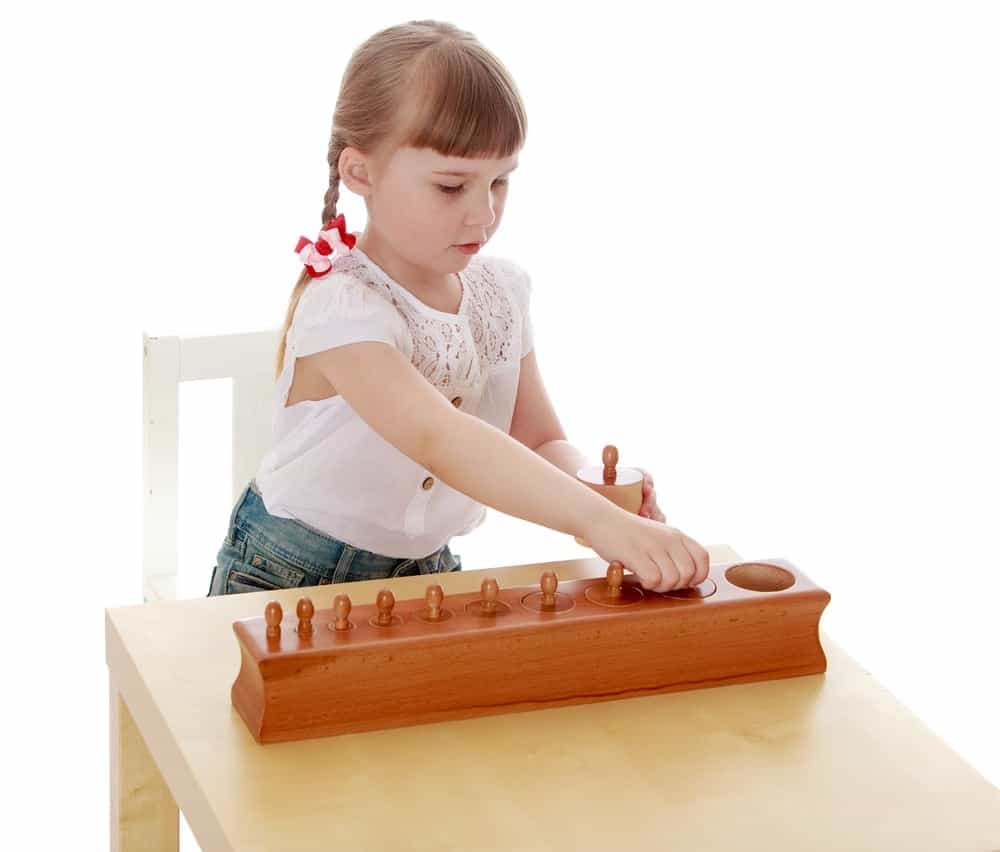By Brenda Nelson
Through scientific study and observation, Dr. Maria Montessori made many discoveries in regards to child development and how children learn. From these discoveries, she developed the Montessori Method of education, which is different from play-based preschool programs. One of the aspects that make it different is the idea of freedom. You may hear terms such as freedom within limits, freedom of movement and freedom of choice. These ideas are interconnected and without them, we are unable to show respect for the child, a core principle in Montessori education.
Freedom of choice allows for the children to make choices for themselves. In a Montessori classroom, the teacher must first carefully plan the prepared environment. Then through observation, teachers can determine which presentations to give to a student. The child then has the freedom to choose what materials they would like to work with in the classroom.
You may see a younger student observing an older student. One student may be preparing their own snack or another student dusting the shelves. What you will not see, however, is all the children doing the same thing. The students are choosing activities in the classroom that they want to work with, not what the teacher or anyone else wants them or expects them to do.
There are times when children may have difficulty making their own choices. A student may approach a teacher and say, “I don’t know what to work on” or a teacher may observe a student wandering the classroom, disturbing the work of others. The teacher must then guide the students in the development of being able to choose for themselves. It may require taking smaller steps, such as offering a choice between two activities.
Why is the freedom of choice important in a Montessori classroom? Take, for example, two students, both four-year-olds, who have chosen to work in the Math area. One student is working with cards and counters, matching numerals and quantities for 1-10 and the other student is working on the 100 board. They have chosen materials that meet their needs. We are not helping a child by telling them to work with cards and counters if they have already mastered this material. The same can be said about having a child work with materials that they are not ready for, like the 100 board when they are still working with numbers 1-10.
No two students are alike, they are individuals who learn at their own pace and in their own way. When we allow children to make choices for themselves we allow them, as individuals, to meet their needs. We show respect for the child and their choices, while they are learning that their choices are important.
Just as educators offer an environment that promotes respect and provides opportunities for children to develop their freedom of choice; families can also support this Montessori principle in the home. Personal care, helping around the house, and playing with toys are just a few ideas where families can promote a child’s freedom of choice and help them become more independent.
In her work with young children, Maria Montessori understood the importance of respect, and how offering freedom of choice in the classroom supports her theory of education. Educators and families can continue to carry on her legacy by preparing an environment that promotes freedom of choice, and respect for young children.
“The education of even a small child, therefore, does not aim at preparing him for school, but for life.” -Maria Montessori



